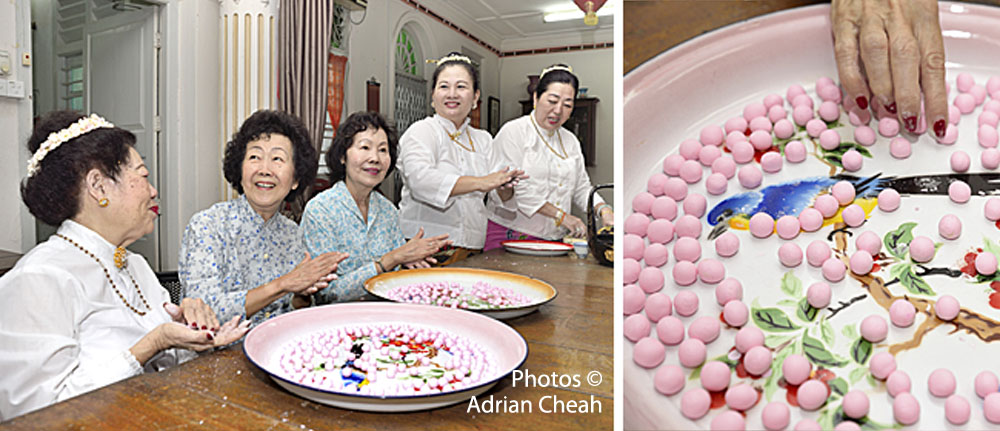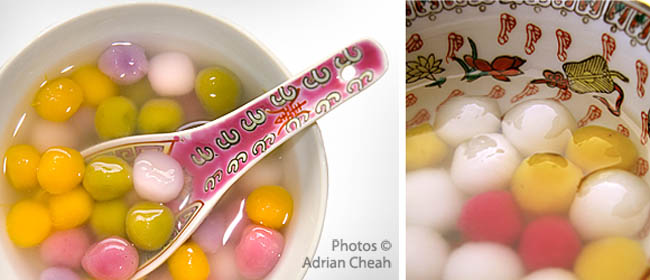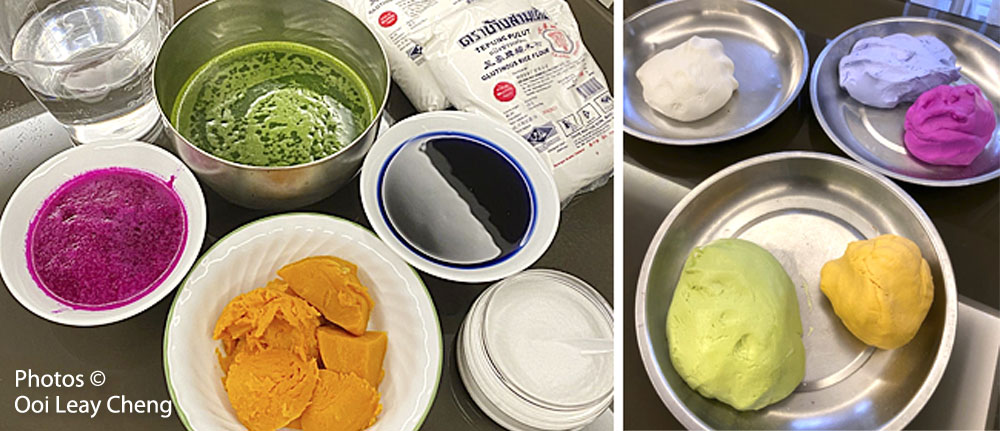A Taste of Unity: Kuih Ee and the Winter Solstice Festival

Traditionally, Kuih Ee ("Tong Yuen" in Cantonese) is served on special occasions such as during weddings and the Winter Solstice Festival (between 21-23 December, about a month or so before Chinese New Year). Nowadays, Kuih Ee is available daily in Penang from certain hawkers in the Pulau Tikus and Ayer Itam markets in the morning.
In the popular local version, Kuih Ee consists of glutinous rice balls coloured brightly and poached in a sweet ginger flavoured syrup – a truly scrumptious experience!

Along Magazine Road (opposite Hotel Jen Penang), a hawker stall entices tea-time patrons with large-sized Kuih Ee, each generously filled with peanuts served in light syrup.
Whether enjoyed in its traditional form or with a localized twist – filled or unfilled – each round glutinous rice ball stands as a symbol of wholesomeness, completeness and unity. It serves as an ode to the vibrant traditions it embodies, offering a taste of cultural richness in every bite.
To make your own Kuih Ee, try the recipe below. You can purchase ready-kneaded coloured flour from most markets during the Winter Solstice season.

If you do not wish however to roll your own Kuih Ee balls, you can buy ready-made ones, then all you need to do is to blanch them and enjoy with syrup.
Despite all these conveniences, nothing compares to making the balls from scratch, with members of the family gathered together, all helping with the kneading and rolling of the coloured flour into marble-sized balls.

Syrup
Ingredients
1/2 cup sugar
1 cup water
2-inch piece of old ginger (optional)
Screwpine leaves (daun pandan)
Method
1. Boil a cup of water.
2. Add sugar, ginger (optional) and daun pandan.
3. Stir until the sugar is dissolved. Adjust the level of sweetness of the syrup to your liking by adding water.
4. Simmer under low fire for about 10 minutes or until fragrant.
Glutinous rice balls
Ingredients
3 cups glutinous rice (beras pulut) flour
Some water to firm up the dough.
Food colouring (e.g., red, yellow, green, blue, pink, orange)
Method
1. Add a little water to the glutinous rice flour, knead it until a smooth dough is formed.
2. Divide the dough into several large pieces and colour them accordingly. Knead until the colour is evenly distributed.
3. Pinch dough into small even pieces (depending on the size preference).
4. Roll the dough pieces in the palm of your hand into a smooth ball, each about the size of a longan.
5. Set a pot of water to boil.
6. Spoon the balls into the boiling water. The moment they rise to the top, scoop them into the syrup.
Serve immediately.
Helpful tips
1. Kuih Ee should be eaten fresh and not refrigerated as this may toughen the texture of the balls.
2. Reheating Kuih Ee over a stove or in the microwave definitely is not recommended.
The many variations of Kuih Ee – giving it a local touch and flavour
As with any culinary tradition, variations abound. Some Penangites, daring to break from convention, infuse coconut milk or incorporate sweet potato puree and green bean paste into the dough, adding a local touch and flavour.

For those seeking an elevated experience, Seven Terraces' Kebaya Restaurant beckons with its Nyonya Tang Yuen – a lovely rendition colored with bunga telang (blue pea flower) and filled with coconut cooked in palm syrup. Served in warm coconut cream with slivers of young coconut flesh, it is a celebration of coconut in its myriad forms – a true gastronomic delight.



If you feel inspired to make Kuih Ee with a difference, go ahead and take the plunge. Be adventurous!
Much like the Winter Solstice festival, which embodies balance, harmony and optimism in life, the passing down of this recipe serves as an example of familial unity. It weaves a narrative of family togetherness and cultural richness – a tangible metaphor for the harmony sought during the Winter Solstice. This season, I am getting my daughter Jean away from her handphone and into the art of colouring and rolling Kuih Ee balls. This season, I am drawing my daughter Jean away from her phone and into the art of coloring and rolling Kuih Ee balls. This promises to be a memorable and enjoyable experience –one she might cherish and pass on to the next generation.
---------------------------------------------------------
Written by Adrian Cheah
Photographed by Adrian Cheah and Ooi Leay Cheng
© All rights reserved
Updated 12 December 2023